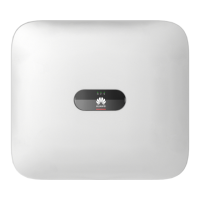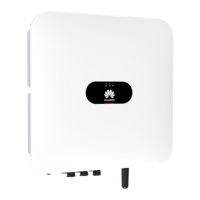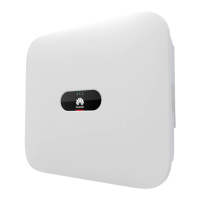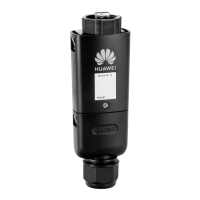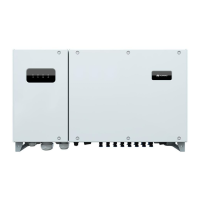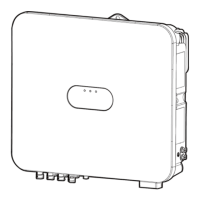LUNA2000-200KWH-2H1 Smart String ESS
User Manual
Copyright © Huawei Technologies Co., Ltd.
The customer or a third party uses battery packs beyond the scenarios specified by the
Company. For example, connect extra loads or use with other battery packs, including
but not limited to battery packs of other brands or battery packs of different rated
capacities.
Damage is caused to battery packs because the battery operating environment or external
power parameters do not meet environment requirements. For example, the actual
operating temperature of battery packs is too high or too low.
Battery packs are frequently overdischarged due to improper maintenance, capacity is
incorrectly expanded, or the battery packs have not been fully charged for a long time.
Battery packs are not maintained based on the operation guide, such as failure to check
battery terminals regularly.
Battery packs are stolen.
The warranty period of battery packs has expired.
Basic Requirements
Do not expose battery packs at high temperatures or around heat-generating sources, such
as sunlight, fire sources, transformers, and heaters. Overheating battery packs may cause
fires or explosions.
To prevent leakage, overheating, fires, or explosions, do not disassemble, alter, or damage
battery packs (for example, insert foreign objects into battery packs or immerse battery
packs in water or other liquids).
The fire hazard of the lithium-ion/sodium-ion battery energy storage system is high.
Consider the following safety risks before handling battery packs:
Battery electrolyte is flammable, toxic, and volatile.
Battery thermal runaway can generate flammable gases and harmful gases such as CO and
HF.
The accumulation of flammable gases generated from battery thermal runaway may cause
deflagration and explosion.
If a battery pack is accidentally exposed to water, do not use it. Move it to a safe place
for isolation and apply for spare parts in a timely manner.
Install battery packs in a dry, clean, and well-ventilated environment that is free from
sources of strong infrared radiation, organic solvents, and corrosive gases. Do not expose
the battery packs to direct sunlight or rain.
Battery packs must be stored in a separate room and inside the packaging. Do not store
battery packs together with other materials or in the open air. Do not stack battery packs
too high. The site must be equipped with qualified fire suppression facilities, such as
firefighting sands and fire extinguishers.
Check the fire safety of the ESS regularly, at least once a month.
Do not remove the battery pack packaging before use. Battery packs should be charged
by professionals in accordance with the requirements. Put battery packs back to their
packaging after charge during storage.
In an outdoor scenario, you are advised to power on battery packs within 24 hours after
unpacking. If the battery packs cannot be powered on in time, place them in a dry indoor
environment without corrosive gases.

